In 2023, the U.S. the Department of Veterans Affairs used AI to process healthcare claims faster, reducing the time from 14 days to under 3 by automating triage and prioritization and thisshift translated into faster reimbursements, better patient service, and significant operational savings.
Businesses across industries are investing in AI to solve real problems, like streamlining operations, reducing overhead, improving customer experience, speeding up the internal decision-making, enhancing compliance workflows, and reducing risk.
From logistics companies optimising delivery routes to banks using AI for fraud detection, the applications are increasingly core to how businesses operate.
But here’s the catch: while the hype around AI is loud, clear conversations about its return on investment (ROI) are rare.
That’s why this blog exists: you’ll discover how to calculate the ROI of AI services, which metrics matter, what costs are often missed, and how to turn smart planning into real business outcomes.
If you're contemplating AI but unsure what it means for your bottom line, you're in the right place. When AI services are pitched, discussions often focus on capabilities. But when it comes to investing, the key question is simple: how much does it return?
How to calculate the ROI of AI services
.avif)
To calculate, the standard formula for return on investment is: ROI = (Net Benefits - Costs) / Costs.
But making this formula useful means being precise about what goes into each side of the equation.
On the benefit side, you account for time savings, accuracy gains, speed of operations, and downstream revenue. These benefits typically come from reducing manual workloads, improving forecasting and personalisation, and speeding up responses.
When it comes to the costs, it's not just about subscription or license fees. You should also factor in the cost of customising models, integrating them into your existing systems, preparing your data, and training your teams. Ongoing costs also matter, such as system maintenance, periodic retraining, and scaling infrastructure.
According to a 2023 McKinsey study, 44% of companies implementing AI underestimated the costs associated with data infrastructure and training. These overlooked costs can often significantly affect the difference between projected ROI and actual performance.
Key ROI metrics for AI services
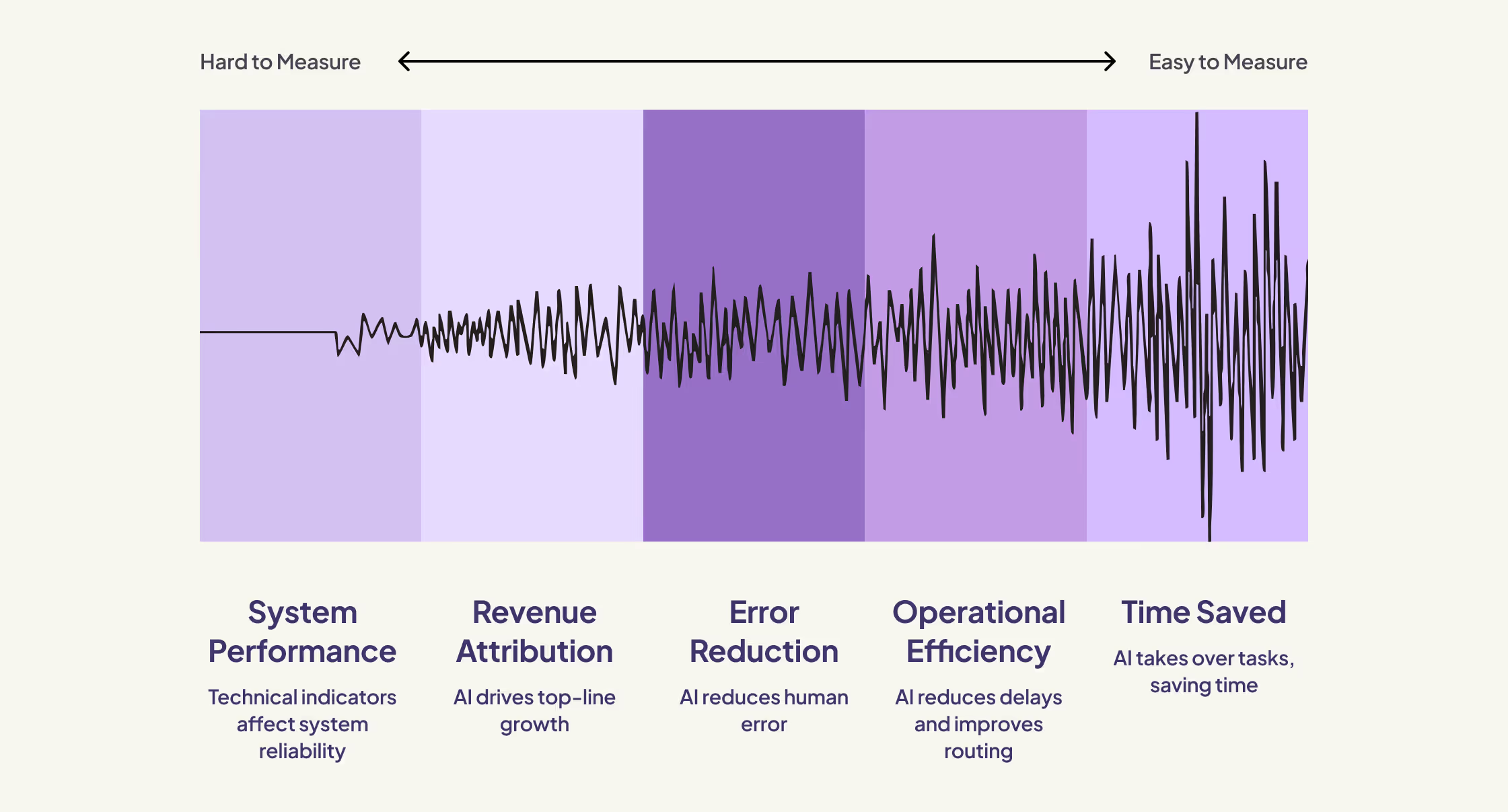
Time saved per task
This is often the easiest and simplest metric to measure. When AI takes over tasks like document classification, ticket triage, or invoice handling, each transaction takes less time.
For instance, if your finance team processes 10,000 invoices a month and automation saves 10 minutes per invoice, you save 100,000 minutes, about 1,667 hours. At an average cost of $30/hour, that equals roughly $50,000 per month.
Operational efficiency
AI can reduce delays, improve routing, and eliminate bottlenecks.
Uber Freight has leveraged AI-powered optimisation to cut down empty miles and improve truck utilisation across its network. By analysing traffic, weather, and load data in real time, the company significantly cut route inefficiencies, boosting delivery reliability and reducing operating costs.
Efficiency metrics often show up in throughput: the number of support tickets resolved, orders processed, or inquiries answered within a given time. Measuring before and after deployment helps isolate the value.
Error reduction
AI reduces human error in repetitive or decision-heavy tasks. Whether it’s data entry, demand forecasting, or product categorisation, accuracy gains can prevent costly mistakes.
A B2B SaaS company deploying an AI triage system for customer tickets saw a 22% drop in SLA violations, reducing the number of escalations and saving team bandwidth, according to this case study summary.
Revenue attribution
AI doesn’t just cut costs, it can also drive top-line growth. Personalised product recommendations, churn prediction models, and dynamic pricing engines can all increase revenue.
Revenue ROI often shows up in increased customer lifetime value, improved conversion rates, or higher average order values. These require controlled testing to isolate results.
System performance
You should also track precision, recall, and latency. These technical indicators affect how reliably a system operates and how users respond to it. Low precision leads to irrelevant results, while long latency can frustrate users.
High-performing systems contribute to adoption and usage. For guidance on evaluation, see our AI testing guide.
Ramp-up time
Some AI systems deliver immediate benefits; others require a learning period. Consider how long it takes to get a model trained, deployed, and effective. The same goes for how long it takes your team to learn and adopt it.
Tracking ramp-up time is key to understanding when returns start and how long the payback period might be.
Factors to consider before investing in AI
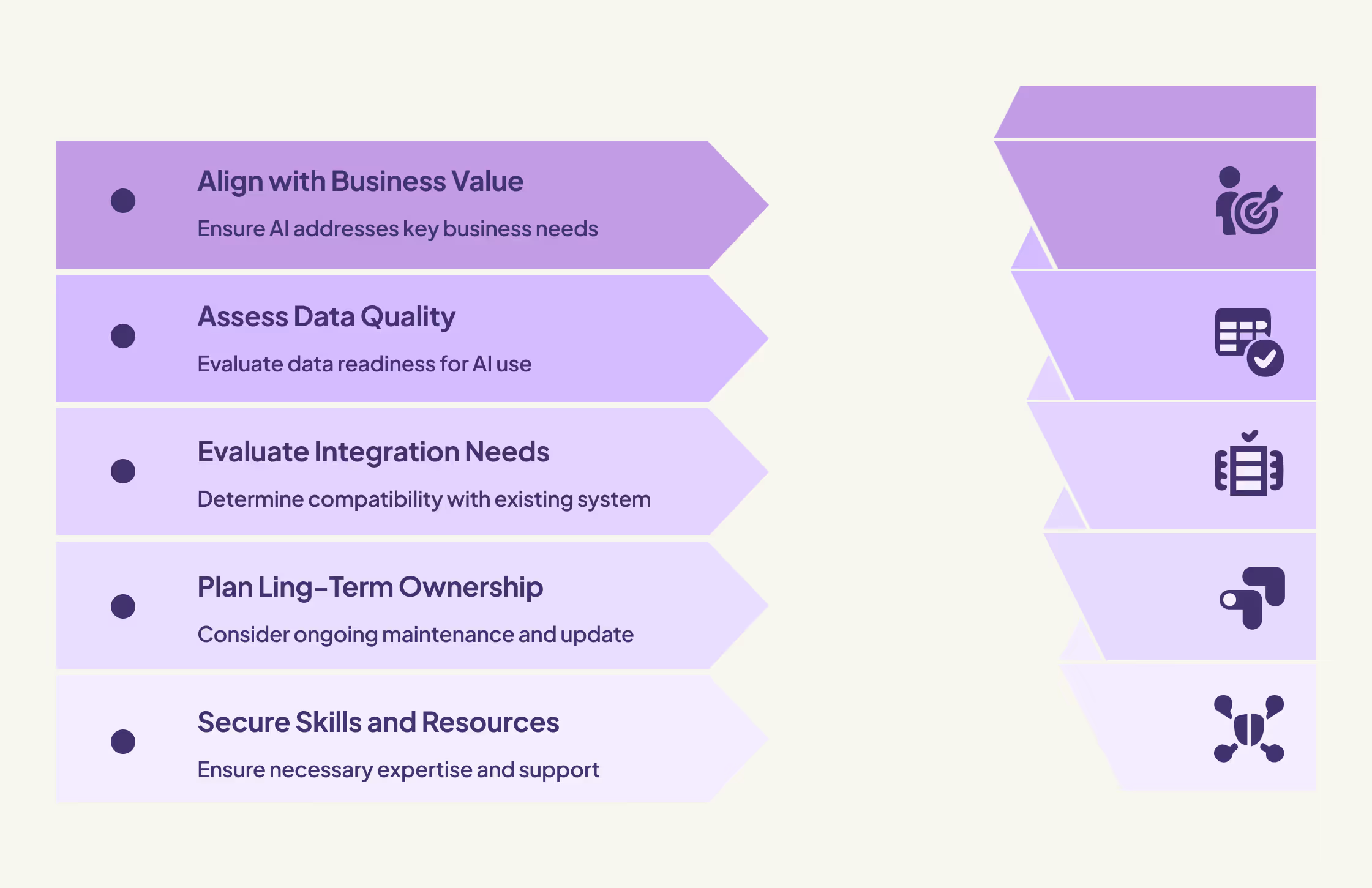
Business value alignment
Start with a problem that affects the bottom line. AI should not be used for experimentation alone. Instead, it should improve processes that matter: reducing cost, increasing revenue, or improving speed.
If your support volume is rising and your ticket backlog is increasing, that’s a clear cost centre. A properly tuned AI assistant might bring measurable improvement here within one quarter.
Data quality
Many AI projects don’t work because of poor input data. Unstructured, inconsistent, or incomplete data limits what AI can do.
Conducting a data readiness audit early can prevent delays and budget overruns later. This includes checking data volume, structure, labelling, and relevance to the task.
Integration needs
Your current tech stack plays a major role. Some AI tools offer plug-and-play connectors; others require API customisation or infrastructure changes.
For organisations running on platforms like Drupal, see how we've approached AI in Drupal implementations.
Long-term ownership
Even after launch, AI systems require monitoring and maintenance. Over time, models may drift, and new edge cases may emerge. Retraining, compliance updates, and UI/UX changes must be factored into total cost of ownership.
After an AI system is launched, it still needs to be monitored and maintained. Over time, models can change, and new edge cases may emerge. When figuring out the total cost of ownership, consider retraining, compliance updates, and UI/UX updates.
Skills and resourcing
Determine whether your internal team can handle the system maintenance or whether vendor support is required. Long-term success is rooted in shared ownership. Our approach to AI services supports capability-building alongside deployment.
Where AI ROI is highest in B2B
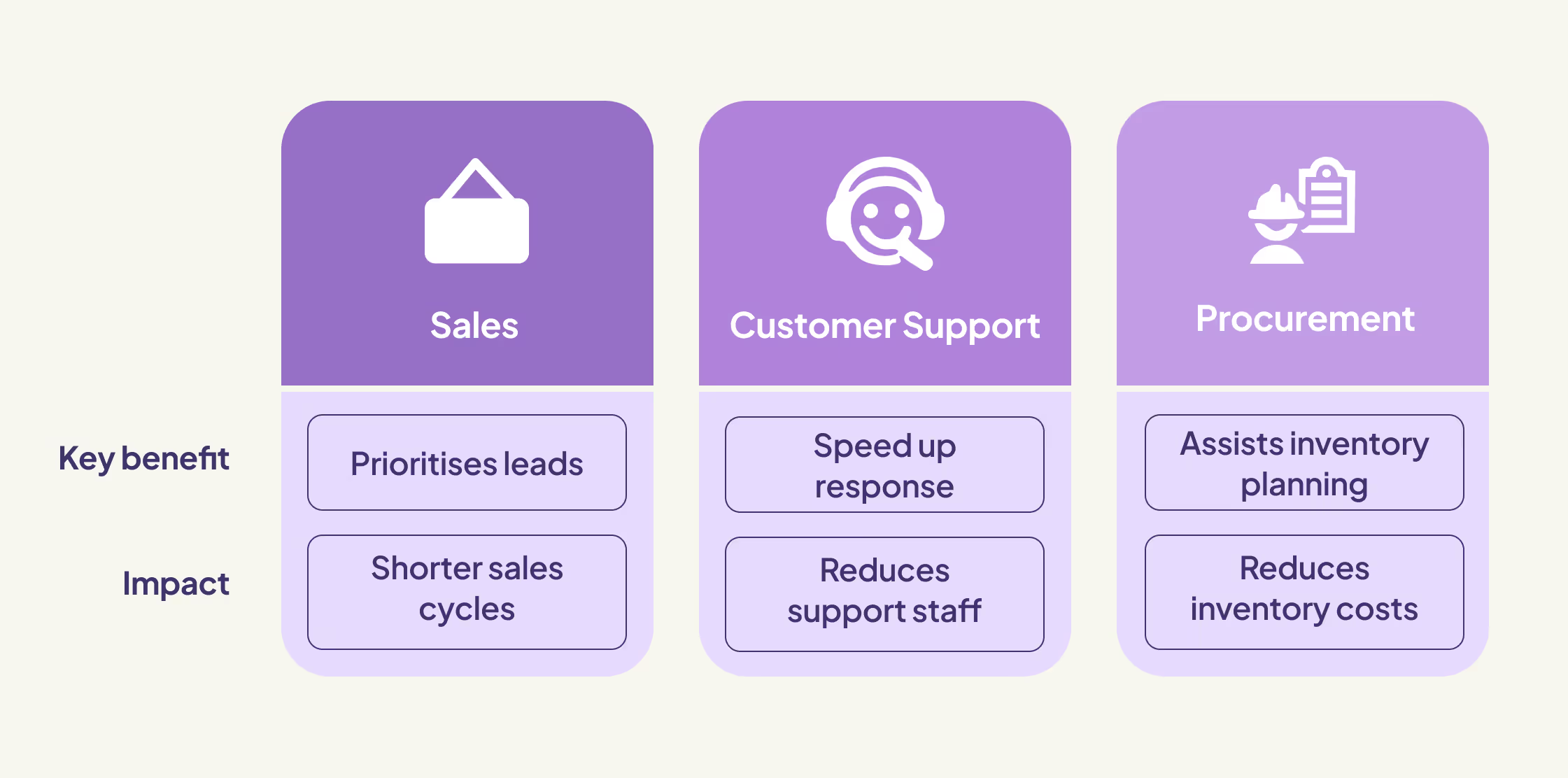
AI is proving to be a game-changer in B2B, especially in areas that require frequent decision-making. In sales, for example, AI can help prioritise leads, suggest follow-ups, and customise email outreach.
HubSpot has found that teams leveraging AI can cut their sales cycles by as much as 12%.
In the realm of customer support, AI tools for ticket triage and classification can significantly speed up response times and decrease the number of tickets agents need to manage. One global SaaS company reported a 15% reduction in support staff needs thanks to AI, saving them $1.3 million each year.
When it comes to procurement, AI assists with inventory planning and forecasting suppliers. Gartner estimates that AI can help reduce inventory costs by up to 10% while still maintaining high service levels.
For more information, explore our AI workflow assistant solutions.
Benefits and tradeoffs of AI systems
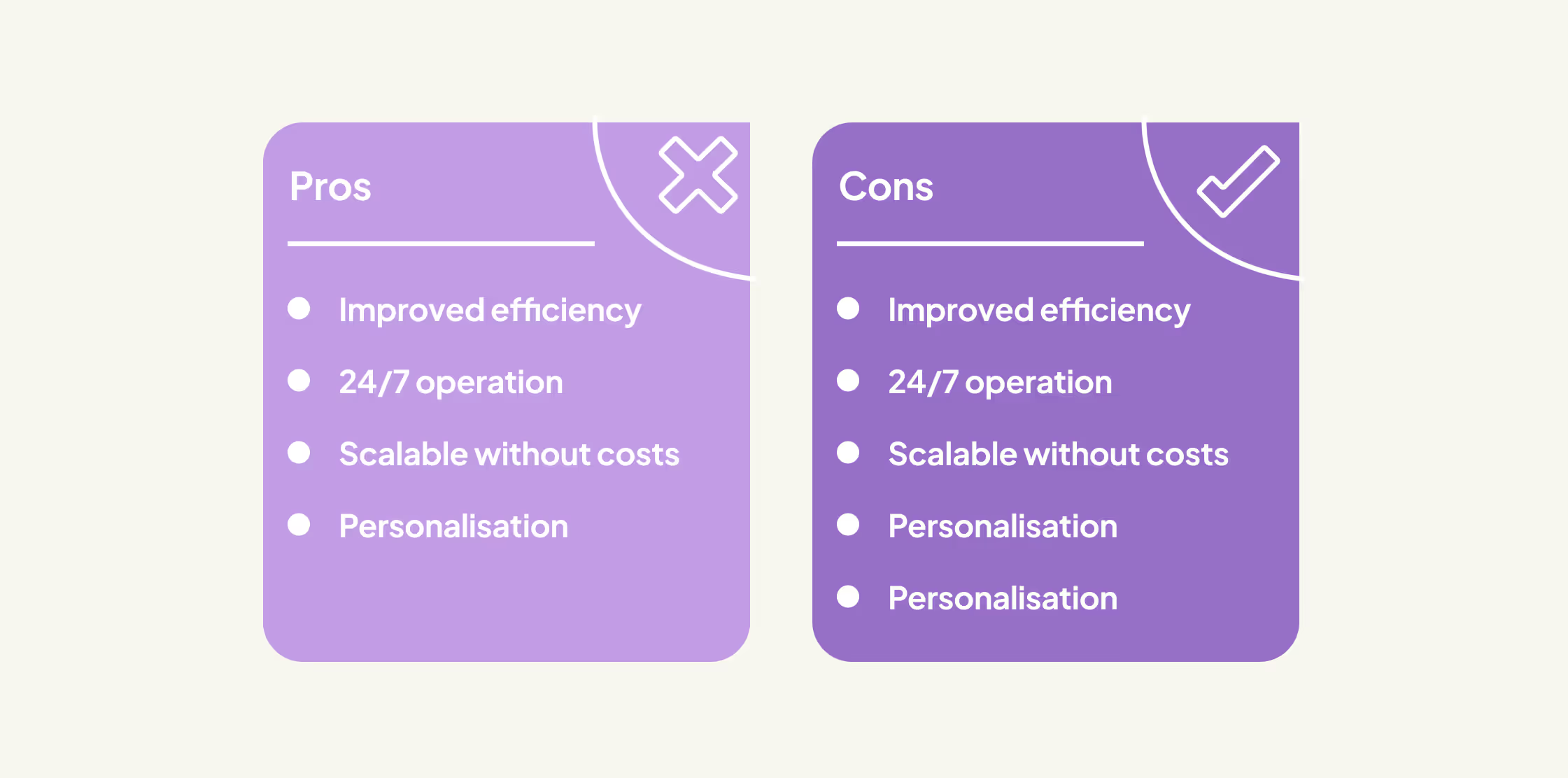
AI brings real advantages, but some tradeoffs are involved.
Benefits
AI systems improve throughput, reduce delays, and surface insights. They operate 24/7 and can be scaled without scaling costs. Personalisation features improve experience and retention.
Tradeoffs
Successful AI adoption requires structured data, systems integration, and training. Predictive systems typically take longer to show ROI than automation systems. Ongoing oversight is also necessary.
Well-scoped implementations help reduce effort. Read our blog on how AIaaS has changed.
Why do some organisations proceed cautiously?
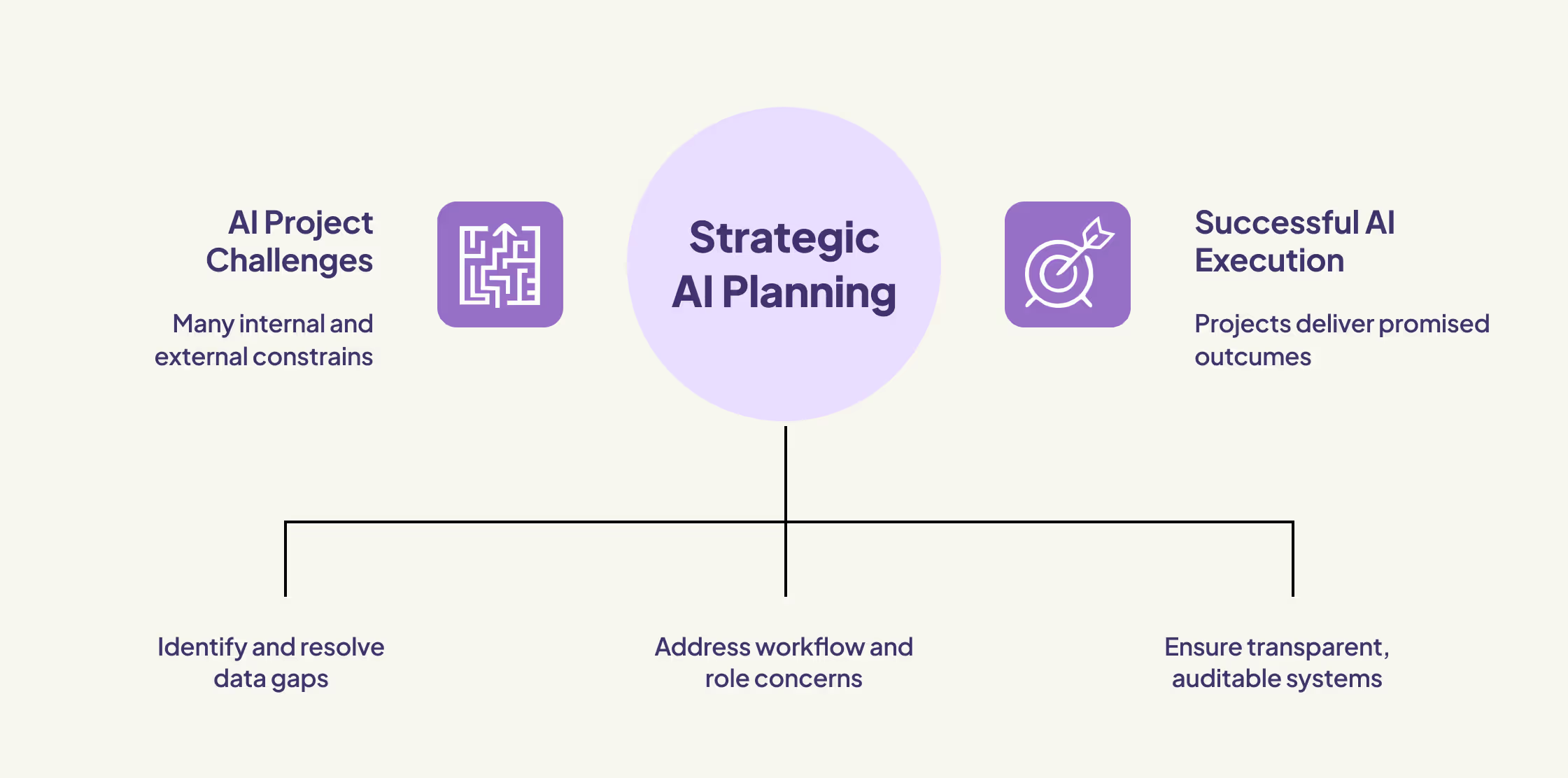
Many companies proceed carefully, often based on past experience or internal constraints.
Some have tried AI projects that overpromised and underdelivered. Others encounter gaps in their data after implementation begins. Internal teams may worry about automation changing workflows or roles.
Compliance requirements can also shape the scope. Finance and healthcare teams need transparent systems that meet audit and reporting standards.
These factors don’t prevent AI projects. They shape planning. Teams that invest time in audits, change management, and compliance reviews tend to execute more successfully.
Hidden value of AI services
There are indirect benefits to AI that are just as real, even if they’re harder to model.
Faster decision-making has compounding value. When you reduce time-to-insight from days to minutes, business leaders can respond more quickly to shifts in the market.
AI also improves morale by taking repetitive work off people’s plates. Employees prefer working on tasks that use judgment, not repetition. This reduces turnover and speeds up onboarding.
Organisations that invest in AI also test and learn faster. They can try more campaigns, pricing experiments, or support approaches in less time.
AI-powered fraud and risk detection systems identify issues earlier. And perceived innovation helps with brand equity. Companies that show AI capability attract more talent, partners, and attention.
Soft ROI: people-first outcomes
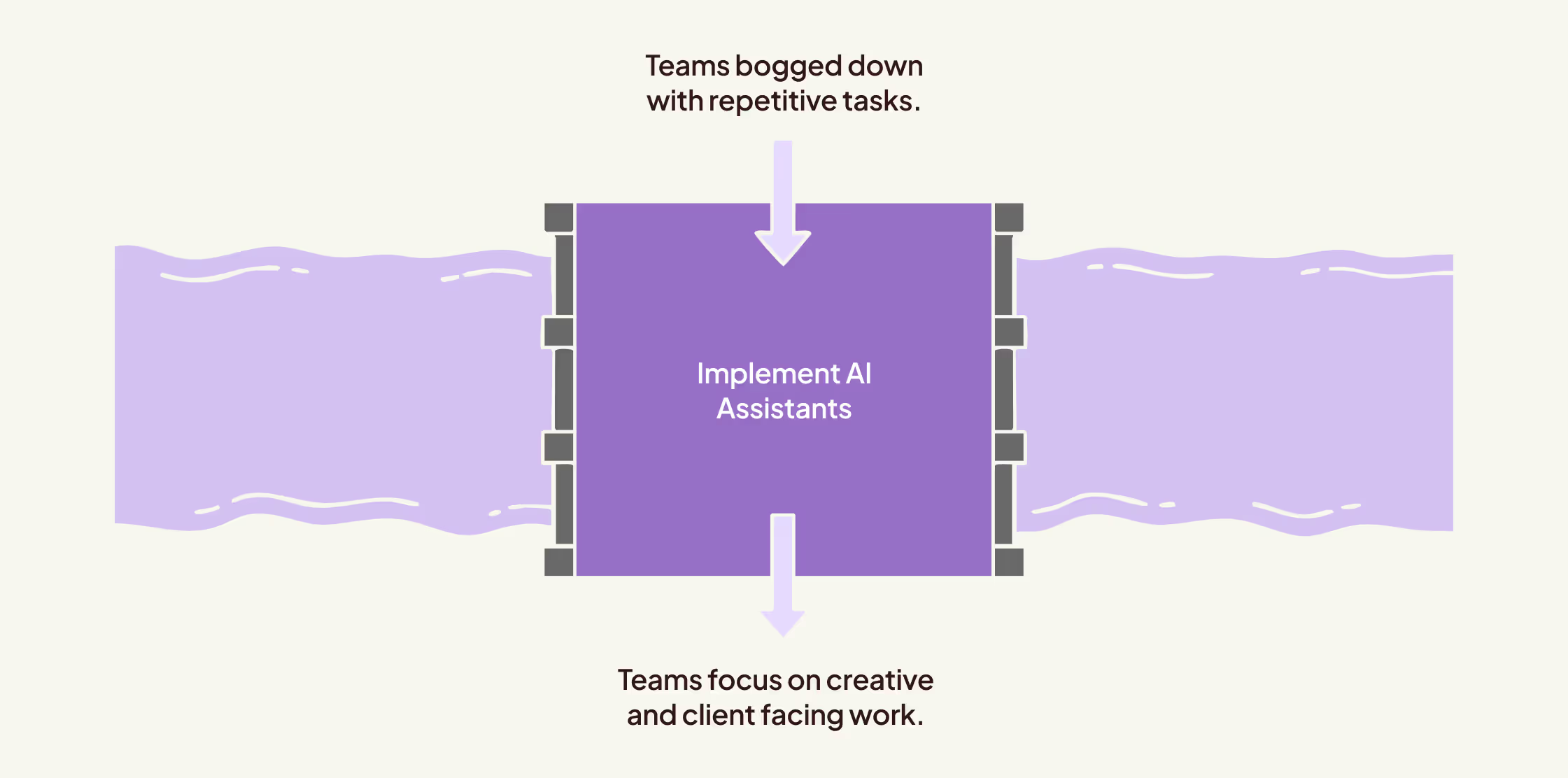
Not all returns show up on a balance sheet. AI frees teams from repetitive work, improves morale, and reduces churn. That’s time and energy reallocated to strategic, creative, or client-facing work.
At QED42, we’ve seen this through AI workflow assistants that cut ticket backlogs, and in platforms like the UNICEF Learning Cabinet, where faster access to insights helps teams focus on outcomes that matter.
With Aeldris, we’re helping legal aid staff spend less time triaging cases and more time with the clients who need them. That shift in attention has operational and emotional payoff.
Soft ROI improves how teams collaborate, how quickly they ramp up, and how well they serve users. It’s a long-term return worth tracking.
What to include when calculating ROI
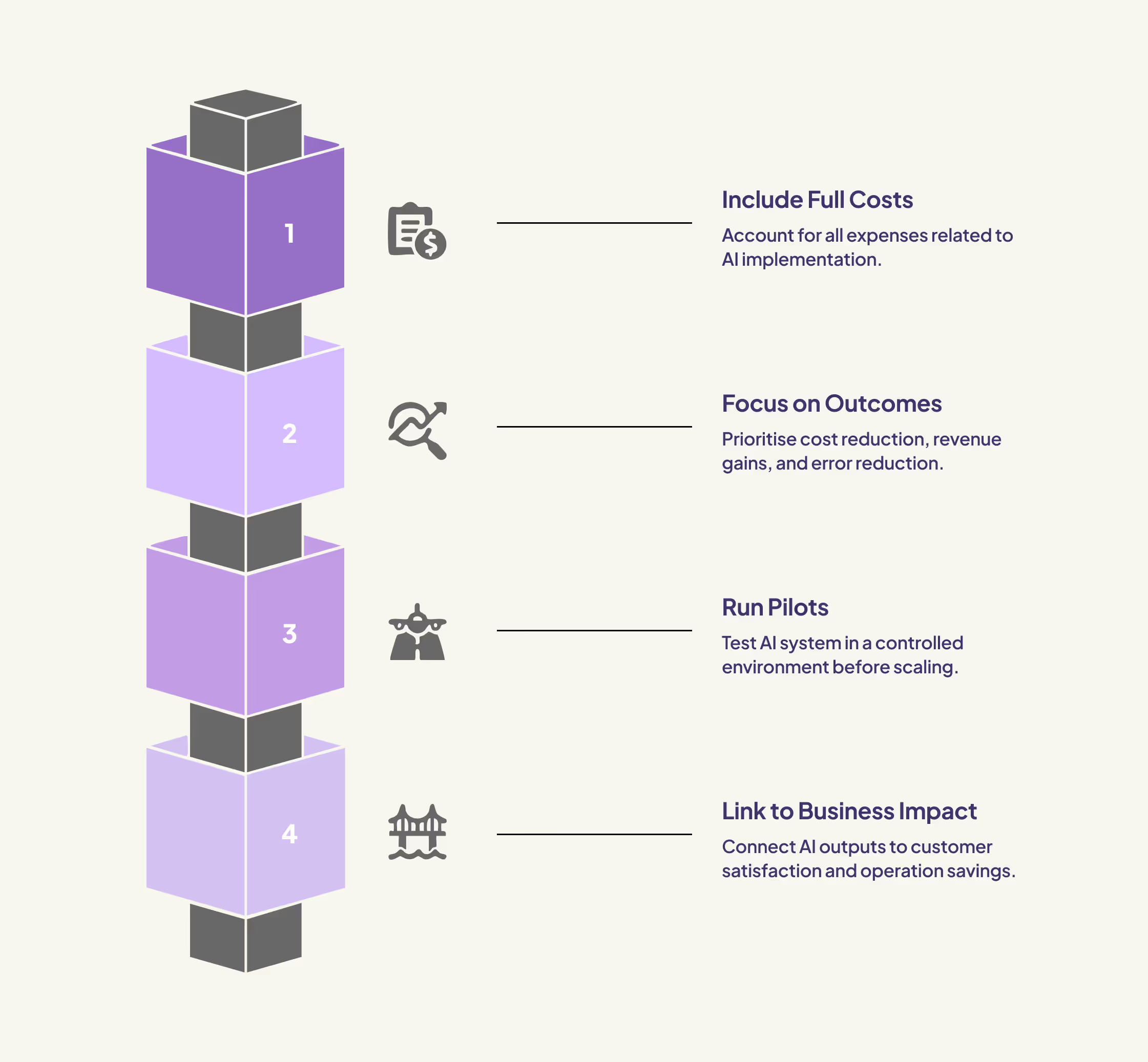
To build an accurate ROI model:
- Include full system costs: setup, training, infrastructure, and updates
- Focus on outcomes: cost reduction, revenue gains, error reductions
- Run pilots before scaling: test against KPIs in a controlled environment
- Link system outputs to business impact: connect response times or accuracy to customer satisfaction or operational savings.
Conclusion
AI ROI is being benchmarked, audited, and tied directly to operations. According to PwC, AI could contribute up to $15.7 trillion to the global economy by 2030, with $6.6 trillion coming from increased productivity. The leading adopters are countries like the United States, China, the United Kingdom, and Germany, where AI is already integrated into sectors such as healthcare, banking, logistics, and public infrastructure.
In the Middle East, governments are investing billions in national AI strategies, including Saudi Arabia’s $40 billion AI investment plan. In India, AI spending across industries such as pharma, finance, and government grew by more than 30 per cent in 2023, according to IDC.
Across industries, AI is embedded in high-impact use cases. Mastercard uses AI to detect fraud in real time. Pfizer accelerates drug discovery with AI. Walmart uses it to forecast demand and optimise inventory. Salesforce has embedded AI into its core CRM to reduce support costs and improve customer experience.
What’s changing is how ROI is tracked. Companies are moving past vanity metrics like total queries or automation rates. They are reporting on time saved per task, reduction in SLA violations, increases in accuracy, operational savings, and revenue impact. In 2024, McKinsey found that leading companies are 3.5 times more likely to measure AI performance using business KPIs, not just technical ones.
The future of AI ROI will be clearer and more connected to real business results. Some Fortune 500 companies are already including AI performance in shareholder updates and quarterly reports. AI is becoming a core part of operations, monitored regularly and expected to deliver consistent outcomes.
No hype, just performance. For practical implementation, see how QED42 approaches AI services.
Frequently asked questions
Why is ROI measurement important?
It removes guesswork and enables confident decisions. Without tracking ROI, it’s difficult to justify continued investment or recognise what works.
What metrics are most useful?Prioritise metrics linked to business outcomes: hours saved, errors reduced, response time improvements, and revenue lift. Precision and accuracy matter, but only in service of those goals.
What challenges affect ROI?The most common ones are weak data pipelines, unclear objectives, and overlooked support costs. Building in early evaluation steps helps reduce risk and clarify expected returns.

